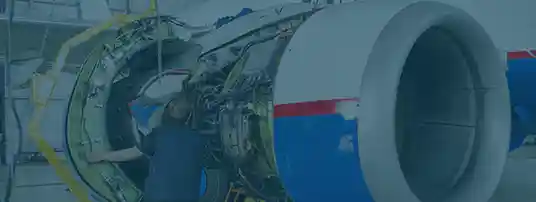Posted on August 16, 2022 linda strong aviation
With the complexity and extent of aircraft systems, accurately monitoring and responding quickly to developing issues is vital to both flight safety and operational efficiency. The Engine Indicating and Crew Alerting System (EICAS) is a centralized, electronic display interface designed for this purpose, delivering real-time data from multiple onboard systems. This blog will explore the essential functions of an EICAS, detailing how it consolidates system parameters, provides alerts, and assists with diagnostics.
Instead of making flight crews rely on individual analog gauges, the EICAS centralizes a wide range of system information and presents it on electronic displays within the cockpit so pilots may readily interpret and respond to changes in status. Specifically, it monitors:
Operational mode continuously displays notable engine and aircraft system data. When a parameter deviates beyond its intended operating range, the EICAS generates a message along with simple aural and visual alerts, directing the crew to take corrective action and remaining active until conditions normalize and alerts are reset. This mode also adapts dynamically during flight phases, suppressing certain non-essential alerts until a safer moment.
Status mode provides an overview of the aircraft's current configuration and system readiness, primarily being used during pre- and post-flight checks. When active, a white “STS” indicator appears on the display, and messages in this mode generally reflect degraded but non-critical conditions, such as deferred maintenance items, low fluid levels within acceptable limits, or minor system degradations. Furthermore, the EICAS may also show static data like the position of flight control surfaces, brake wear indicators, oxygen pressure, and other readiness-related values.
To assess whether systems meet the minimum dispatch criteria, personnel refer to the Quick Reference Handbook (QRH), which outlines thresholds or limitations for each parameter. If a value displayed on the EICAS falls outside acceptable limits defined in the QRH, it may indicate that maintenance is required or that the aircraft cannot be dispatched until corrective action is taken.
Maintenance mode is accessible while the aircraft is on the ground, presenting access to stored fault data and system tests. Up to five distinct pages or formats may be available depending on the aircraft type and installed equipment, covering:
To help crews prioritize and respond appropriately to different types of system messages, an EICAS will usually employ a standardized color-coding scheme, where each color indicates a specific level of urgency or type of information:
Although these are generally used, colors may still vary by manufacturer. Regardless of alert deviations, once a condition is rectified, pilots can clear the associated message by pressing the master caution or master warning reset button. However, some messages automatically clear when the issue resolves.
In summary, the EICAS functions as both a monitoring system and a built-in diagnostic interface, offering flight crews and maintenance teams clear, immediate insight into system performance and emerging issues. Like many integrated avionics systems, an EICAS relies on a network of sensors, data buses, display units, wiring harnesses, and more items that must all function reliably to create accurate readouts and timely alerts. Over time, these components may degrade or reach the end of their service life, so operators and technicians need to choose a trusted procurement partner for replacement parts.
ASAP Semiconductor is ready to support these operational requirements and beyond, our website Aviation Sourcing Solutions presenting a vast range of high-quality aircraft components for various models and systems. We understand the necessity for high-caliber products, which is why we have several quality-assurance measures in place, ranging from strict manufacturer and supplier vetting processes to document verification. More than that, we strive to help every customer promptly obtain the parts they need, all within their budget and with every procurement requirement accommodated. To see how we can serve you, connect with our expert team at your convenience.

 The only independent
The only independent



“We Proudly Support Intrepid Fallen Heroes Fund that serves United States Military Personal experiencing the Invisible Wounds of War : Traumatic Brain Injury (TBI) and Post Traumatic Stress (PTS). Please visit website (www.fallenheroesfund.org) and help in their valiant effort”.
We Hope that You Will Visit Us Again the Next Time You Need Aircraft Parts and Make Us Your Strategic Purchasing Partner.
Request for Quote